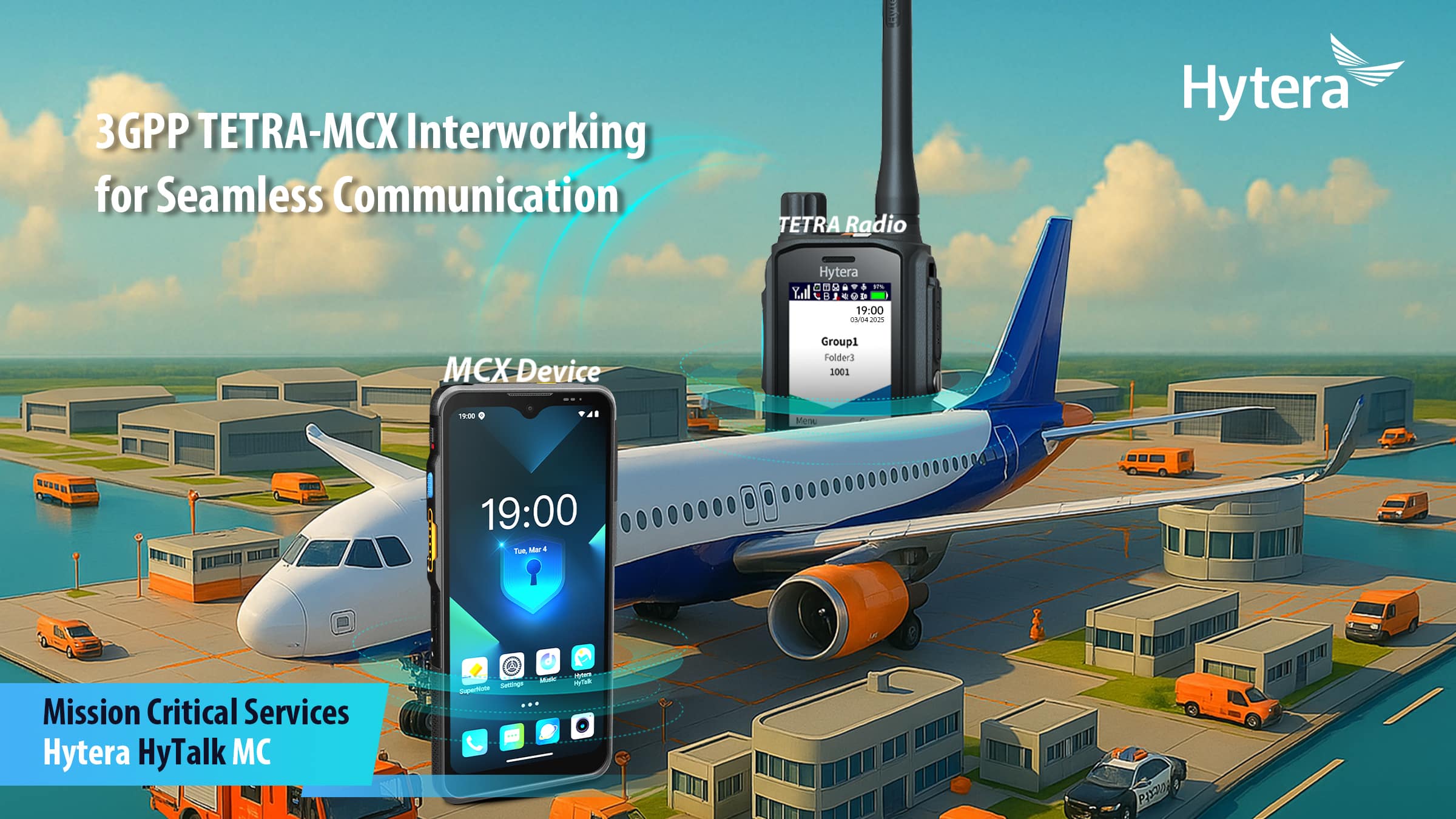What is Open-standard MCX-TETRA Interworking
PoC & MCS
As industries increasingly rely on broadband for mission-critical communications, seamless integration between narrowband and broadband systems becomes vital. TETRA-MCX interworking, enabled by the Interworking Function (IWF), bridges this gap, ensuring that organizations can harness the best of both technologies during the transition to broadband.
In this blog, we delve into the importance of IWF, its key functions, and why the 3GPP IWF stands out as the most effective solution for TETRA-MCX integration.

What Is TETRA-MCX Interworking?
TETRA (Terrestrial Trunked Radio) is a narrowband digital trunking technology widely used for mission-critical voice and data communication in public safety, transportation, and energy sectors. On the other hand, Mission-Critical Push-to-Talk (MCPTT), part of the 3GPP Mission-Critical Services (MCX) suite, leverages LTE/5G broadband to deliver advanced voice, video, and data services.
In 2020, 3GPP Release 16 introduced the IWF standards to interconnect MCX with narrowband systems such as TETRA and P25. For TETRA, IWF enables:
- Half-duplex and full-duplex individual calls.
- Group calls, emergency calls, and broadcast calls.
- Interoperable short data services (SDS).
This integration allows organizations to maintain TETRA's reliable voice capabilities while accessing broadband's high-speed multimedia services.
Why Is IWF Needed?
TETRA is a trusted communication protocol renowned for its robust performance. However, the demand for high-speed mobile broadband and smart data services is growing, driven by applications like video streaming, real-time data sharing, and AI-based analytics.
A direct switch to broadband is neither practical nor cost-effective for many organizations. Instead, the optimal approach is gradually integrating broadband capabilities with existing narrowband systems. This is where IWF plays a crucial role.
Key Scenarios Requiring IWF
1. Role-Based Device Allocation:
Some use TETRA devices for secure voice communication, while others use MCX devices for broadband services. IWF ensures all of them can interconnect seamlessly.
2. Transition Period:
Organizations gradually migrating to broadband need IWF to maintain operational continuity during the transition.
3. Inter-Agency Collaboration:
Different agencies may use separate systems (e.g., TETRA or MCX). IWF enables interoperability for efficient joint operations.
4. Sensitive Missions:
Critical tasks often demand TETRA's secure communication and broadband's multimedia capabilities. IWF ensures both systems work together effectively.
In essence, IWF supports a cost-efficient transition, allowing organizations to leverage the strengths of both TETRA and MCX without disrupting operations.
Why 3GPP IWF Is the Best Choice
While there are alternative methods for TETRA-MCX interworking, the 3GPP IWF offers the most comprehensive and standardized solution. Let's explore the options:
Alternative Methods
1. RoIP (Radio over IP):
RoIP is a simple solution for group call interworking but lacks support for individual calls. Additionally, it suffers from compatibility and quality issues as a non-standardized method.
2. Dual-Mode Devices:
There are very few devices supporting TETRA and MCX functionalities and often come with a big price tag.
3. Dispatch Center Gateways:
These require significant customization and offer limited interoperability, often focusing on basic group calls rather than complete system integration.
Advantages of 3GPP IWF
The 3GPP IWF, designed as an open-standard solution, integrates TETRA and MCX systems at a system level, supporting all TETRA voice services. Key benefits include:
- Comprehensive Interworking: Supports group calls, individual calls, SDS, and emergency communication.
- Identity Mapping: Displays users from one system (e.g., TETRA) as users on the other (e.g., MCX) for seamless interaction.
- End-to-End Security: Ensures encrypted communication across both systems with consistent algorithms, keys, and codecs.
- Scalability: Enables interworking between 3GPP MCX and third-party TETRA systems, ensuring flexibility for diverse use cases.
Through IWF, the 3GPP MCX system functions as if it were another TETRA system, minimizing operational complexity and enhancing reliability.
Hytera HyTalk MC: A Practical Solution for TETRA-MCX Interworking
The 3GPP standard-compliant Hytera HyTalk MC solution demonstrates the power of TETRA-MCX interworking. It integrates professional MCX radios with Hytera TETRA radios and third-party TETRA systems via IWF, enabling:
- Seamless voice and data communication across systems.
- Enhanced security with end-to-end encryption.
- Support for group and individual calls, emergency communication, and SDS.
Hytera's solution highlights how organizations can leverage IWF to maximize the capabilities of their existing infrastructure while embracing broadband technology.
Conclusion
The transition from narrowband to broadband doesn't have to disrupt operations or compromise communication quality. The 3GPP IWF, as the standard for TETRA-MCX interworking, provides a secure, scalable, and cost-effective solution for organizations navigating this shift.
By enabling seamless communication between TETRA and MCX systems, IWF ensures that industries can maintain their mission-critical voice capabilities while embracing the possibilities of high-speed broadband. Solutions like the Hytera HyTalk MC further demonstrate how this interworking can be implemented effectively, offering a roadmap for the future of mission-critical communications.





